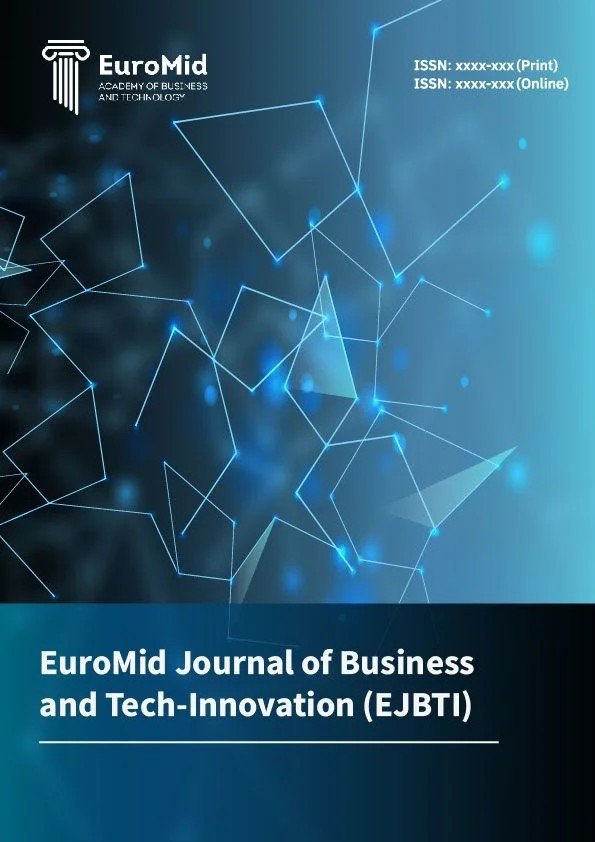Abstract
Growth of technology and innovation is inevitable. Using natural language processing along with machine learning, this technology allows voice assistants to detect user preferences. Voice assistants would suggest products that are suited to the user, smoothen the buying process, and show a user interface that is in tune with the user's way of shopping behavior. The innovation copes with the challenges of limited visual comparison by adding context-aware suggestions that improve the engagement of users and enhance their confidence in the purchase decisions made through voice interactions. Our study is multifaceted in its blend of survey and interview approaches, investigating the psychology and behavior of consumer interactions. The study emphasizes impulsive purchase behavior influenced by this personalized technology. The SEM methodology was used for data analysis and hypothesis testing in connection with the voice assistant's features and online consumer decision-making process. This research offers several useful insights regarding the still-evolving voice commerce and its implications for businesses to enhance user engagement and satisfaction with personalized online shopping. The study presents both an innovative framework for voice-assisted e-commerce and discusses the rich dynamics between technological development and consumer behavior in the digital marketplace.
References
Buhalis, D., & Moldavska, I. (2022). Voice assistants in hospitality: Using artificial intelligence for customer service. Journal of Hospitality and Tourism Technology, 13(3), 386–403. https://doi.org/10.1108/JHTT-03-2021-0104
Burke, R. R. (2002). Technology and the customer interface: What consumers want in the physical and virtual store. Journal of the Academy of Marketing Science, 30(4), 411–432. https://doi.org/10.1177/009207002236914
Chung, A. E., Griffin, A. C., Selezneva, D., & Gotz, D. (2018). Health and fitness apps for hands-free voice-activated assistants: Content analysis. JMIR mHealth and uHealth, 6(9), e9705. https://doi.org/10.2196/mhealth.9705
Dellarocas, C., Zhang, X., & Awad, N. F. (2013). Exploring the value of online product reviews in forecasting sales: The case of motion pictures. Journal of Interactive Marketing, 27(4), 183–197.
Dholakia, U. M., Zhao, M., Dholakia, R. R., & Roggeveen, A. L. (2004). Coping with the coping construct: A critical review and future directions. Academy of Marketing Science Review, 2004(4).
Huang, Z., Benyoucef, M., & Kassab, M. (2018). A systematic review of the factors influencing the adoption of mHealth solutions for underserved populations. Journal of Organizational and End User Computing, 30(2), 1–25.
Kazim, S., Jaheer Mukthar, K. P., Jamanca-Anaya, R., Cayotopa-Ylatoma, C., Mory-Guarnizo, S., & Silva-Gonzales, L. (2022, March). A study on cosmetics and women consumers: Government protective measures and exploitative practices. In International Conference on Business and Technology (pp. 718–732). Cham: Springer International Publishing. https://doi.org/10.1007/978-3-031-26953-0_66
Kowatsch, T., Maass, W., & Wiesner, M. (2019). Personalization via extended UTAUT: The role of individual differences, user-interface tailoring and moderating effects. In Proceedings of the 52nd Hawaii International Conference on System Sciences.
Lamba, S. S. (2021). FOMO: Marketing to millennials. Notion Press.
Liang, T. P., & Lai, H. J. (2000). Effect of store design on consumer purchases: An empirical study of online bookstores. Information & Management, 37(5), 241–251.
Limayem, M., Hirt, S. G., & Cheung, C. M. (2014). How habit limits the predictive power of intention: The case of information systems continuance. MIS Quarterly, 38(1), 177–196.
Longo, F., Nicoletti, L., & Padovano, A. (2017). Smart operators in industry 4.0: A human-centered approach to enhance operators' capabilities and competencies within the new smart factory context. Computers & Industrial Engineering, 113, 144–159. https://doi.org/10.1016/j.cie.2017.09.016
Malodia, S., Islam, N., Kaur, P., & Dhir, A. (2021). Why do people use artificial intelligence (AI)-enabled voice assistants? IEEE Transactions on Engineering Management.
Nagadeepa, C., Mohan, R., & Kumarathas, P. (2022). Acceptance of voice assistants using technology acceptance model (TAM). Kristu Jayanti Journal of Management Sciences (KJMS), 9–17. https://doi.org/10.59176/kjms.v1i2.2277
Nagadeepa, C., Pushpa, A., Mukthar, K. J., Rurush-Asencio, R., Sifuentes-Stratti, J., & Rodriguez-Kong, J. (2024). User’s continuance intention towards banker’s chatbot service: A technology acceptance using SUS and TTF model. In Digital Technology and Changing Roles in Managerial and Financial Accounting: Theoretical Knowledge and Practical Application (pp. 65–77). Emerald Publishing Limited.
Pushpa, A., Jaheer Mukthar, K. P., Ramya, U., Asis, E. H. R., & Martinez, W. R. D. (2023). Adoption of fintech: A paradigm shift among millennials as a next normal behaviour. In Fintech and Cryptocurrency (pp. 59–89). Wiley. https://doi.org/10.1002/9781119905028.ch4
Roslan, F. A. B. M., & Ahmad, N. B. (2023). The rise of AI-powered voice assistants: Analyzing their transformative impact on modern customer service paradigms and consumer expectations. Quarterly Journal of Emerging Technologies and Innovations, 8(3), 33–64.
Setyani, V., Zhu, Y. Q., Hidayanto, A. N., Sandhyaduhita, P. I., & Hsiao, B. (2019). Exploring the psychological mechanisms from personalized advertisements to urge to buy impulsively on social media. International Journal of Information Management, 48, 96–107. https://doi.org/10.1016/j.ijinfomgt.2019.01.007
Suh, K. S., & Chang, S. (2006). User interfaces and consumer perceptions of online stores: The role of telepresence. Behaviour & Information Technology, 25(2), 99–113. https://doi.org/10.1080/01449290500330398
Tversky, A., & Simonson, I. (1993). Context-dependent preferences. Management Science, 39(10), 1179–1189. https://doi.org/10.1287/mnsc.39.10.1179
West, E. (2022). Buy now: How Amazon branded convenience and normalized monopoly. MIT Press. https://doi.org/10.7551/mitpress/12464.001.0001
Xiao, S. H., & Nicholson, M. (2013). A multidisciplinary cognitive behavioural framework of impulse buying: A systematic review of the literature. International Journal of Management Reviews, 15(3), 333–356. https://doi.org/10.1111/j.1468-2370.2012.00345.x

This work is licensed under a Creative Commons Attribution 4.0 International License.
Copyright (c) 2025 Array




